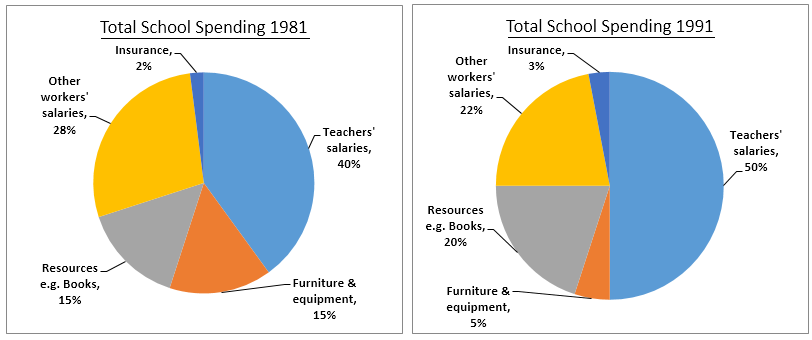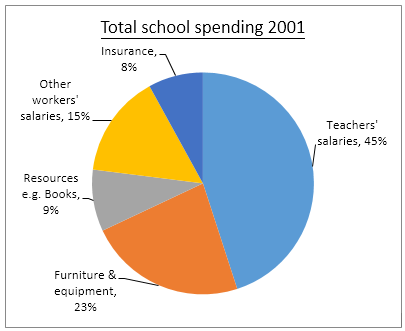Task - 1
Summarise the information by selecting and reporting the main features, and make comparisons where relevant.


Sample Answer ▼
The given pie charts illustrate a UK school's annual spending and show the changes over two decades. As is seen in the provided pie charts, the school spent an increasing percentage of money on teachers' salaries, with the maximum of 50% being spent in 1991, after which it was reduced by 5% in 2001. Also, this remained the area, where the highest percentage of the money was spent, in the given three years. Expenditure on other workers' salaries decreased significantly over the years with 28%, 22% and 15% in 1981, 1991 and 2001 respectively.
Again, the percentage spent on resources like books also decreased after a slight increase of 5% in 1991. Investment on furniture and equipment saw a substantial decline from 15% to 5% in the first 10 years, before increasing again up to 23% in 2001. Finally, the least percentage of annual spending was on insurance over the two decades, with a small hike from 2% in 1981 to 8% in 2001.
Comments
Post a Comment